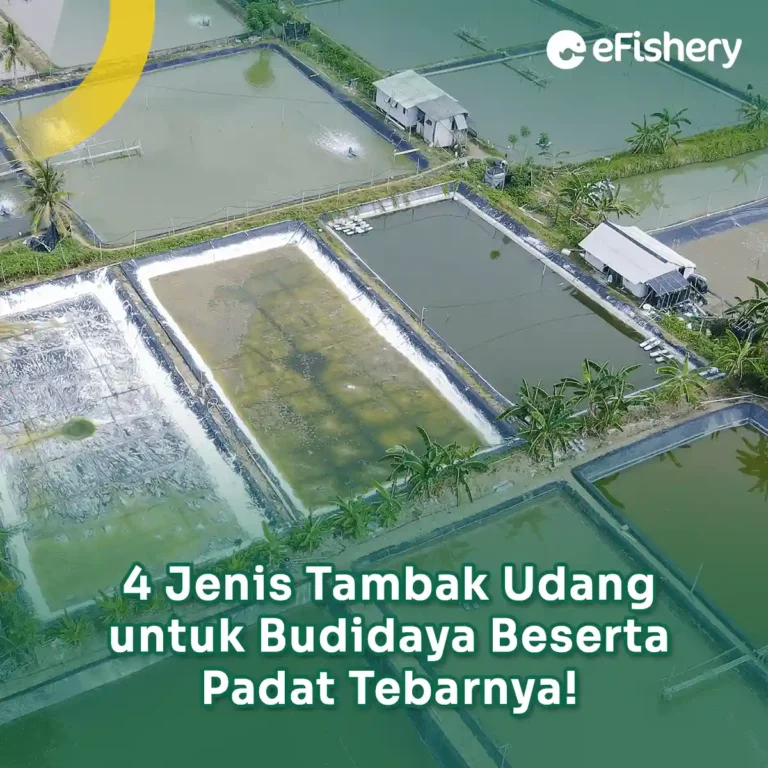Artikel Ini Telah Direview Oleh:

Anggie Nur
Magister Bioteknologi
Shrimp farming has grown over time, from a small traditional business to a global industry in Southeast Asia. This progress correlates with technological adaptation for the growth of higher pond shrimp species densities so that high market demand will be commercially profitable.
In general, around 80% of all types of pond shrimp cultivated in the world are shrimp species Penaeus (shrimp from the Penaeidae family), and only two species of shrimp, ie Penaeus vannamei (Pacific white shrimp), and Penaeus monodon (giant tiger prawns).
Types of Shrimp Ponds
In order to be able to choose and manage the right type of shrimp ponds, you need to know the types of shrimp ponds that are suitable for your cultivation goals and expenses. Here are 4 types of shrimp ponds for cultivation along with their optimal stocking densities:
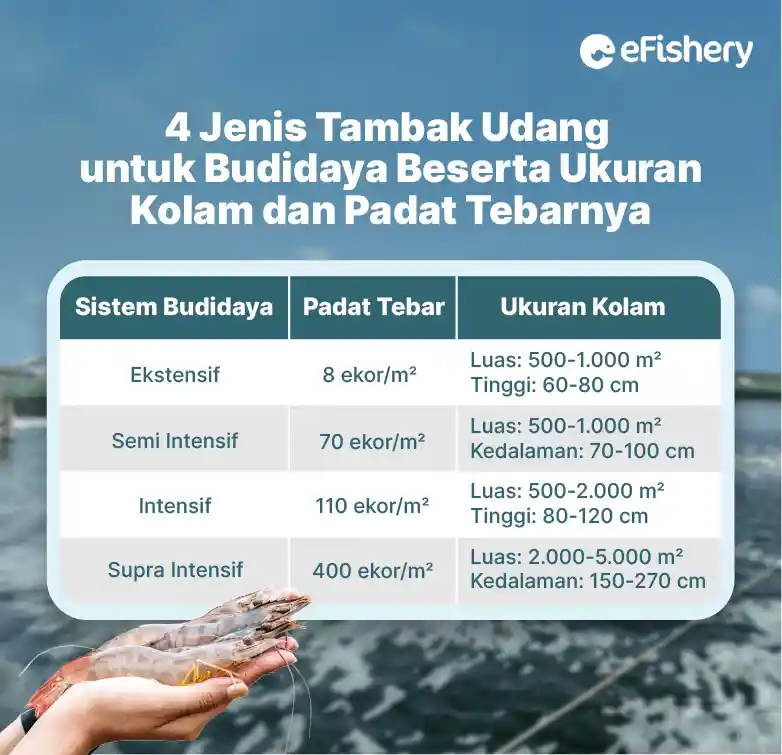
The following is a more detailed explanation of the types of shrimp ponds:
1. Extensive Traditional Shrimp Pond Cultivation
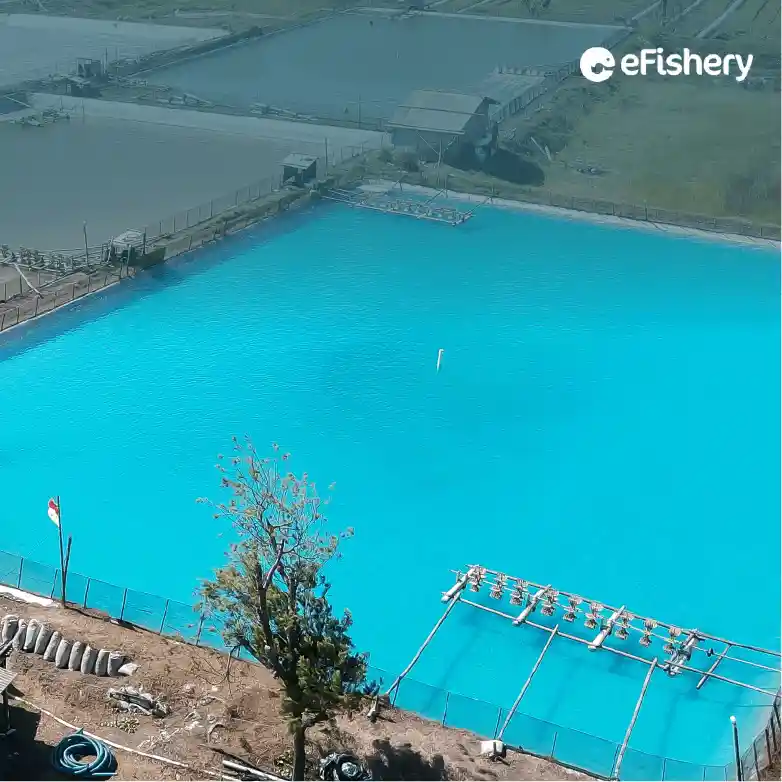
This type of cultivation system does not have a specific shape (irregular) and usually has a size 500-1.000 m2. Each pond usually also has a water depth of 60-80 cm. Usually shrimp seeds come from nature and their supply depends on the season.
The shrimp fry used in this type of shrimp ponds are seeds found during water exchanges or seeds collected from nature that are deliberately stocked by shrimp farmers. The stocking density of this cultivation system is very low, namely 8 individuals/m2.
2. Traditional Semi-Intensive Shrimp Pond Cultivation
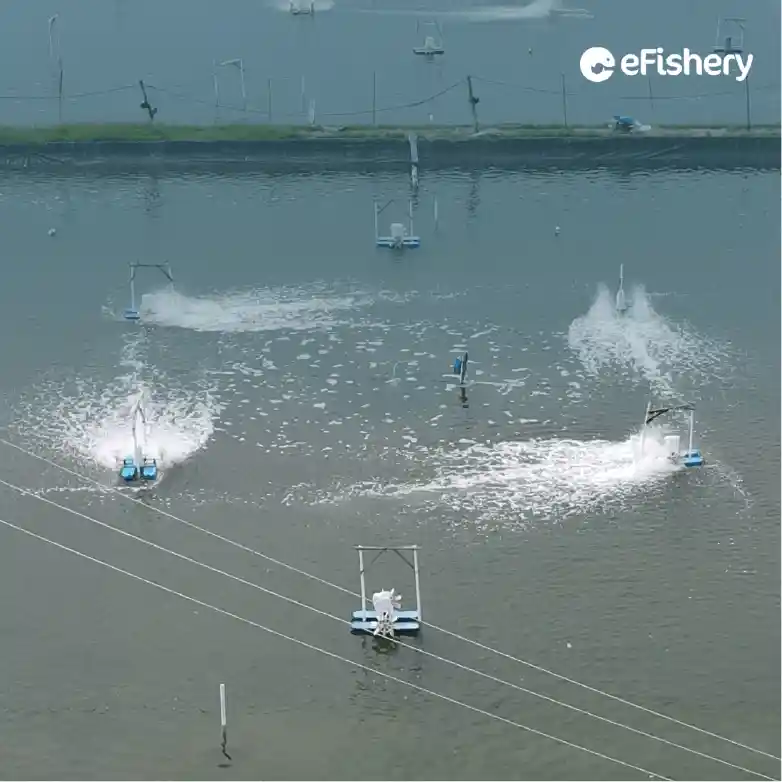
Shrimp ponds in this cultivation system have exit and entry facilities for water exchange, pond preparation, and harvesting facilities. This type of pond also has a diagonal ditch with a depth of 70–100 cm which is useful for water drainage, shading for shrimp on sunny days, and collecting shrimp during harvest.
The stocking density for this cultivation system is higher, with the size of the pond 500-1.000 m2. This is very directly proportional to the regular feeding and management of water. The recommendation for fry density for semi-intensive traditional shrimp pond cultivation is 70 fish/m2.
3. Intensive Shrimp Pond Cultivation
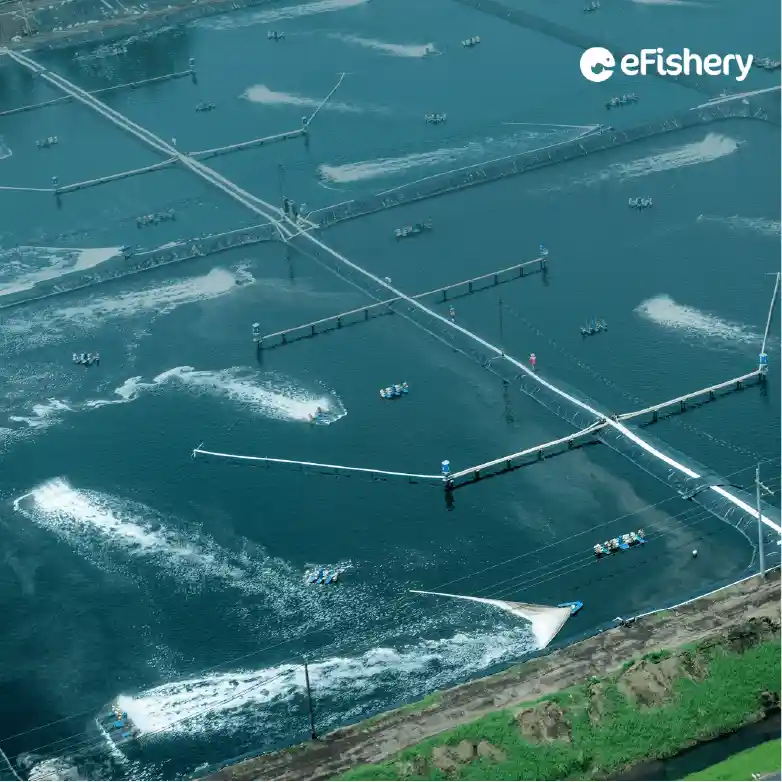
Cultivating this type of shrimp requires budget which is very high because you need to make a pond maintenance facility in the form of a concrete tank. The uniqueness of intensive shrimp farming is the dependence on seeds raised in hatcheries, with high stocking densities 110 head/m2, the feed that must be formulated, as well as the use of intensive aeration and water management. Pool sizes vary, between 500–2,000m2.
The raw materials for pond embankments are covered with plastic sheets, concrete and pure soil. The drain pipe system is located in the center of the pond, with a drain gate of the sluice type, monk sluice, or a combination of the two. Shrimp were fed daily with a high protein FCR formula diet.
4. Intensive Supra Shrimp Pond Cultivation
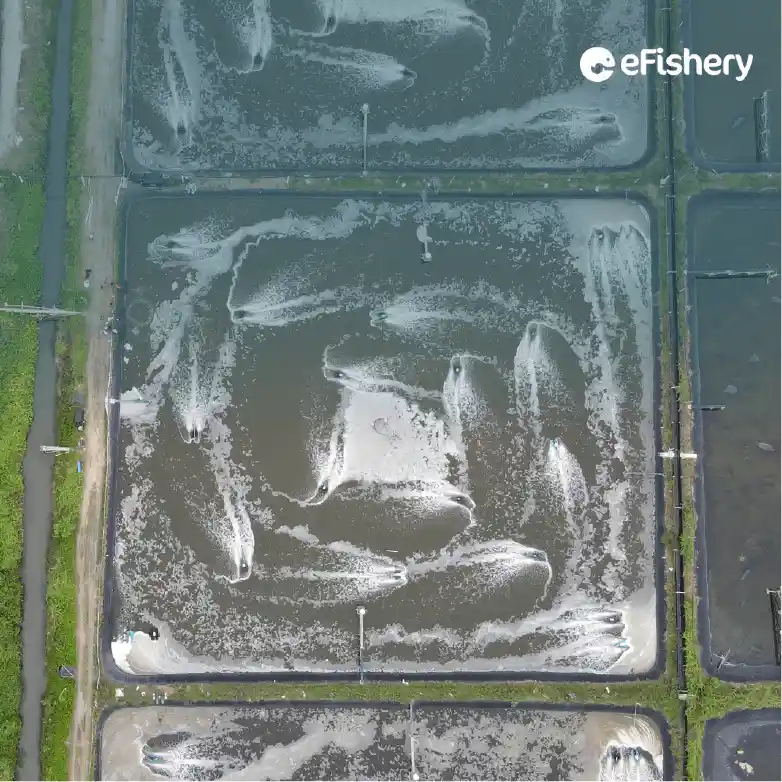
Intensive supra shrimp pond cultivation has in common with intensive ponds with systems low volume high density, that is, it does not require a large area of land but high productivity. Pool sizes vary between 2,000–5,000 m2. The production target is still faced with various challenges, one of which is cultivation management which can produce a high level of productivity.
Therefore, shrimp production with a supra-intensive system can be successful and profitable if the production process is implemented properly. The stocking density of shrimp fry is as large as 400 head/m2, with a pond depth of 150-270 cm. The application of probiotics in the formation of biofloc systems in rearing media can support optimal growth, survival, and FCR in aquaculture production.
Maximize Shrimp Cultivation Through Cultivation Consultation from eFarm, FREE!
Need Help Regarding Shrimp Cultivation Business?
Fill in your personal data in the following form. Our team will immediately contact you via the number cellphone attached. Make sure the data entered is correct.
For more detailed information regarding shrimp farming, you can consult with experts through the application eFarm. Application eFarm have features Cultivation Consultation where Farmers can consult directly with cultivation experts. Only with cellphone in hand, you can consult regarding cultivation constraints for FREE!
Come on, get optimal crop yields with solutions from eFarm! Own the app eFarm Now!

Anggie Nur - Magister Bioteknologi
Anggie merupakan lulusan sarjana dan magister bioteknologi serta memiliki pengalaman riset di dunia perikanan khususnya udang
Questions Regarding Types of Shrimp Ponds
Shrimp ponds consist of 4 types of cultivation systems, namely traditional (extensive), semi-intensive, intensive, and supra-intensive shrimp farming.
Cultivating this type of shrimp requires budget which is very high because you need to make a pond maintenance facility in the form of a concrete tank. The uniqueness of intensive shrimp farming is the dependence on seeds raised in hatcheries, with a high stocking density of 110 tail/m2, the feed that must be formulated, as well as the use of intensive aeration and water management. Pool sizes vary, between 500–2,000m2.
- Erfan AH, M. Mangampa and H. Suryanto. 2007. Cultivation of vannamei shrimp (Litopenaeus vannamei) plus traditional patterns in Maros Regency, South Sulawesi. Aquaculture Media. 2(2):67-70.
- Kungvankij P and Chua T. 1986. Shrimp Culture: Pond Design, Operation And Management. NACA Training Manual Series No. 2.
- Rahim, MRA Rukmana, A. Landu and Asni. 2021. Super intensive vaname shrimp (Litopenaeus vannamei) cultivation with different stocking densities using a zero water discharge system. Journal of Fisheries and Marine Research Vol 5 No.3 (2021) 595-602.
- Silva U, Tavares, Ballester E. 2017. Universidade Federal do ParanáUse of native and non‐native shrimp (Penaeidae, Dendrobranchiata) in world shrimp farming. Reviews in Aquaculture. Vol. 10(4):10-50.
- WWF. 2014. Indonesia Better Management Practices Vannamei Shrimp Cultivation in Semi-Intensive Ponds with Wastewater Treatment Plant (IPAL). WWF Indonesia: Jakarta.
